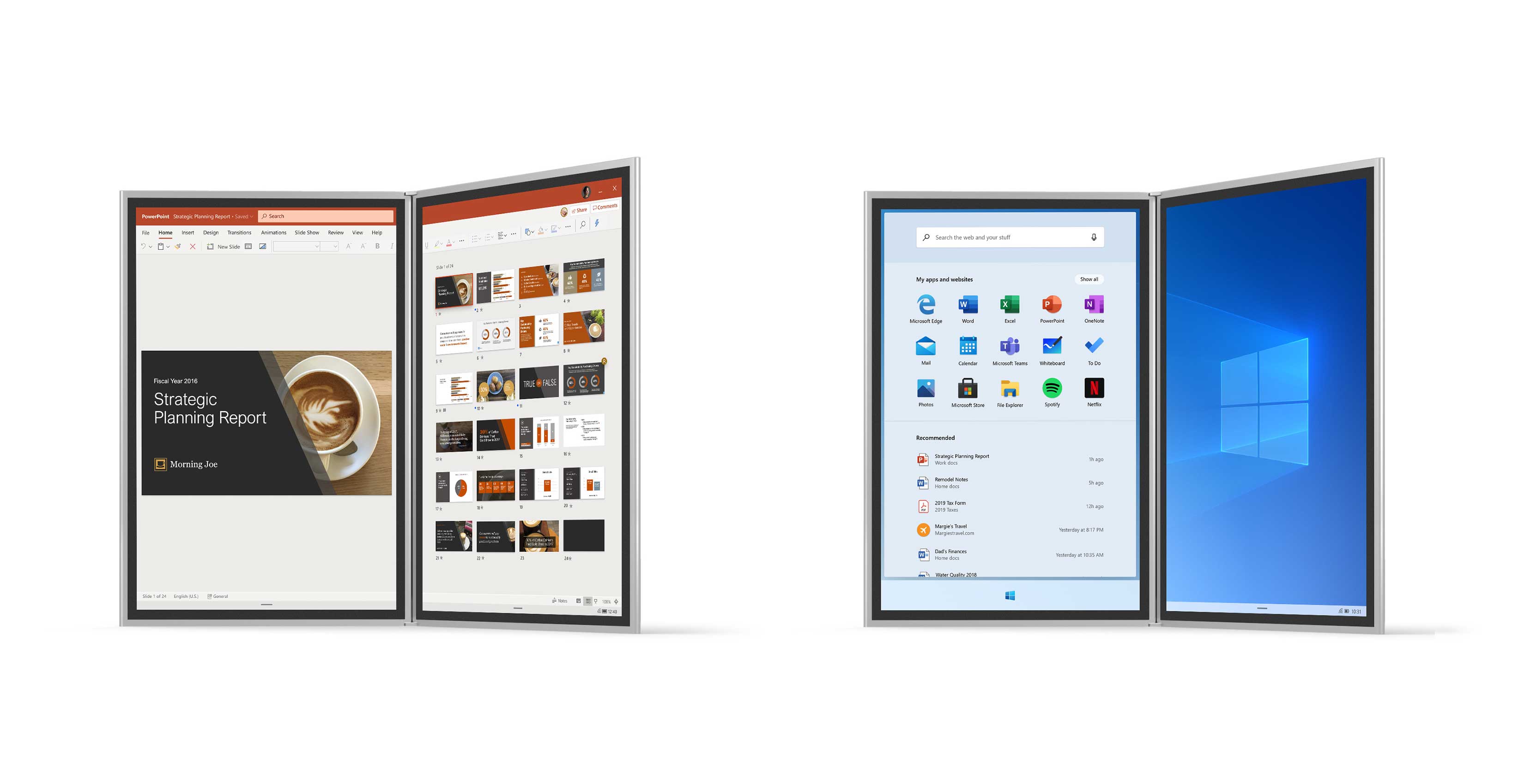
On the heels of a report that Microsoft pushed back the launch of its Windows 10X operating system to 2021, more details have emerged suggesting the company dropped support for legacy Windows apps in the new OS.
According to Windows Central, which received information from “trusted sources” over the last few weeks, Microsoft’s latest Windows 10X build no longer includes support for ‘win32’ apps.
Microsoft’s initial plan for Windows 10X was to support legacy desktop Windows apps based on the win32 platform through a ‘container.’ Windows Central reports that Windows 10X uses a technology called ‘VAIL’ to virtualize these apps on Windows 10X.
Without VAIL and the containers, Windows 10X won’t run traditional win32 apps, a significant departure from Microsoft’s original vision.
Instead, Windows 10X will reportedly act as a competitor to Chromebooks focusing on Univeral Windows Platform (UWP) apps and web apps such as Progressive Web Apps (PWAs). Considering Microsoft recently announced a plan to pivot Windows 10X from dual-screen to single-screen devices, as well as the company’s issues with the container system, this report doesn’t come as a surprise.
Windows Central reports that part of the shift’s reasoning is that Windows 10X will launch on low-end hardware when it arrives next year. Specifically, it will run on devices aimed at the education and enterprise markets. These computers won’t be powerful enough to run containered win32 apps without a significant hit to performance. Microsoft wants Windows 10X to be a modern, lightweight version of Windows, making these performance problems antithetical to the company’s goals.
Microsoft has other plans for win32 on Windows 10X
Shipping a Windows product without access to legacy win32 apps will be incredibly problematic. Just look at Microsoft’s endeavours with ARM — the Surface Pro X was a great 2-in-1 but suffered from a lack of app support.
To avoid upsetting the enthusiast crowd, Microsoft has two plans for Windows 10X. The first is launching the new OS alongside support for legacy app streaming.
Windows Central’s trusted sources say Microsoft will use technology similar to its Windows Virtual Desktop platform, which lets companies run applications installed in the cloud on client PCs. Plus, when you consider Microsoft’s work on Project xCloud for game streaming, streaming a legacy desktop app doesn’t seem that far fetched.
By shifting to a focus on web apps, Microsoft can go after Chrome OS in a big way. Windows 10X should allow Microsoft to release software on cheaper, more lightweight hardware for people that only need web apps for their workflow. Plus, by offering streamable legacy apps, these devices could one-up Chromebooks with the promise of access to more powerful apps when needed.
On top of this, the removal of VAIL means Microsoft can work to support ARM-based hardware with Windows 10X as well as Intel. Without VAIL and win32 apps, ARM-based devices should run Windows 10X and web apps without issue.
What about dual-screen devices?
Microsoft still plans to launch dual-screen devices — the company reportedly wants to do so in 2022 — and it still intends to include VAIL with these devices. Since the plan for dual-screen PCs is that they sport high-end, more powerful hardware, VAIL should be less of an issue.
In other words, it seems like Microsoft hopes to catch the low and high ends of the portable PC spectrum with Windows 10X. However, traditional laptops like the Dell XPS and HP Spectre will continue to run regular Windows for now.
Finally, Windows Central’s sources said Microsoft plans to hit ‘release to manufacturing’ (RTM) status with Windows 10X in December, with the first devices arriving by spring 2021.
Source: Windows Central
MobileSyrup may earn a commission from purchases made via our links, which helps fund the journalism we provide free on our website. These links do not influence our editorial content. Support us here.


